Abstract
1. In response to an auditory stimulus normal subjects made ballistic flexion movements of the top joint of the thumb against a lever attached to the spindle of a low-inertia electric motor. 2. Electromyographic (e.m.g.) activity was recorded from pairs of fine wire electrodes inserted into flexor pollicis longus and extensor pollicis longus, respectively the sole flexor and extensor of the joint. 3. Movements of 5 degrees, 10 degrees and 20 degrees were made from initial angles of 10 degrees, 20 degrees and 30 degrees flexion against torques of 0.04, 0.08 and 0.16 Nm. 4. The e.m.g. activity initiating such movements was characterized by a 'triphasic' pattern of sequential bursts of activity in the agonist (flexor pollicis longus), then in the antagonist (extensor pollicis longus), and then in the agonist again. 5. The duration of the first agonist and first antagonist bursts ranged from about 50 to 90 ms and there was no significant change of burst length in the different mechanical conditions. 6. In movements of differing angular distance, the rectified and integrated e.m.g. activity of the first agonist burst could be correlated with the distance moved. The rectified and integrated e.m.g. activity of the first antagonist burst could not be correlated with the distance moved. 7. Responses of the muscles to perturbations either before or during the ballistic movements were studied. Current in the motor could be altered so to extend the thumb ('stretch'), to allow it to accelerate ('release'), or to prevent further movement ('halt'). 8. Suitably timed stretch increased the e.m.g. activity of the first agonist burst while release decreased it. 9. There was a small response of the agonist to stretch or halt timed to act during the interval between the first two agonist bursts; the major response was an augmentation of the second agonist burst. 10. Stretch, timed to act between the first two agonist bursts which released the antagonist, diminished the activity of the first antagonist burst while halt virtually eradicated it in all but one subject. Release, at this time, which stretched the antagonist, increased the activity of the first antagonist burst. 11. It is concluded that the individual components of a ballistic movement are relatively fixed in duration and the amount of e.m.g. activity is altered within this time interval to produce the different forces required for fast movements of different amplitude. 12. Both agonist and antagonist muscles remain under some feed-back control during the entire course of a ballistic movement, but the amount of influence of fedd-back depends on the supraspinal command signal and the changes in the spindle during the course of the movement.
Full text
PDF
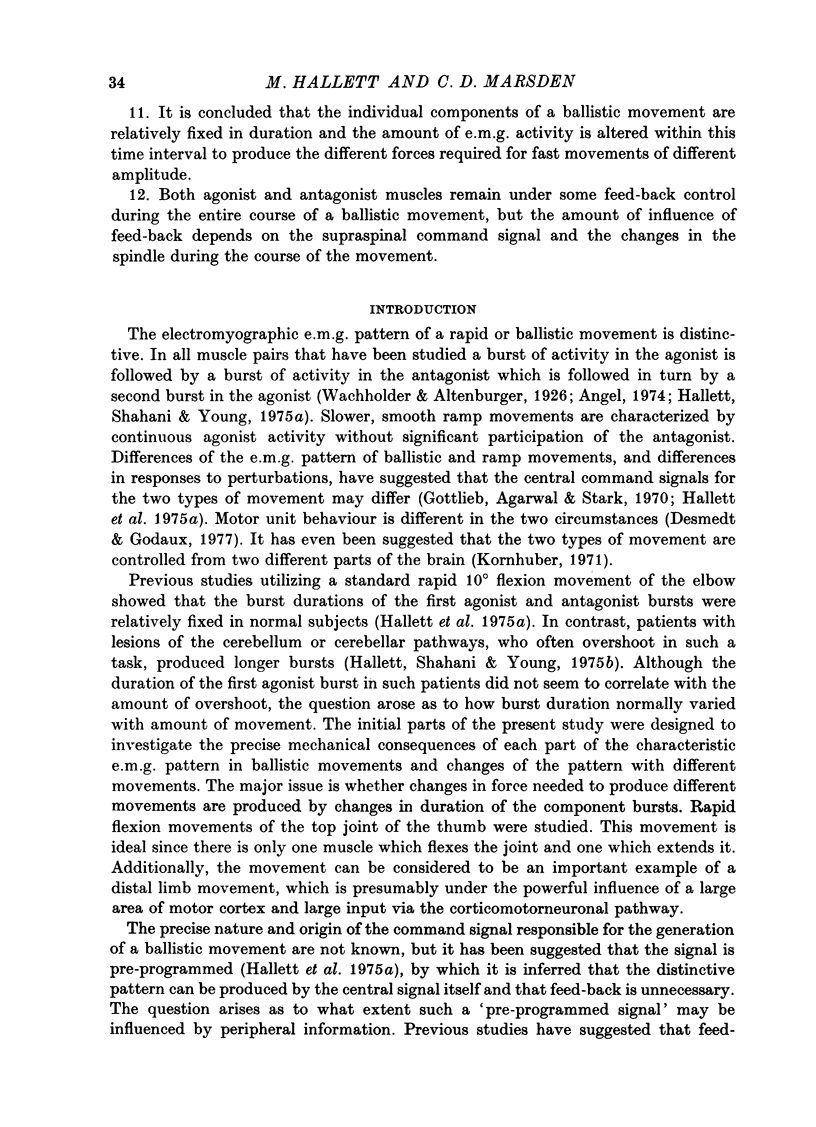
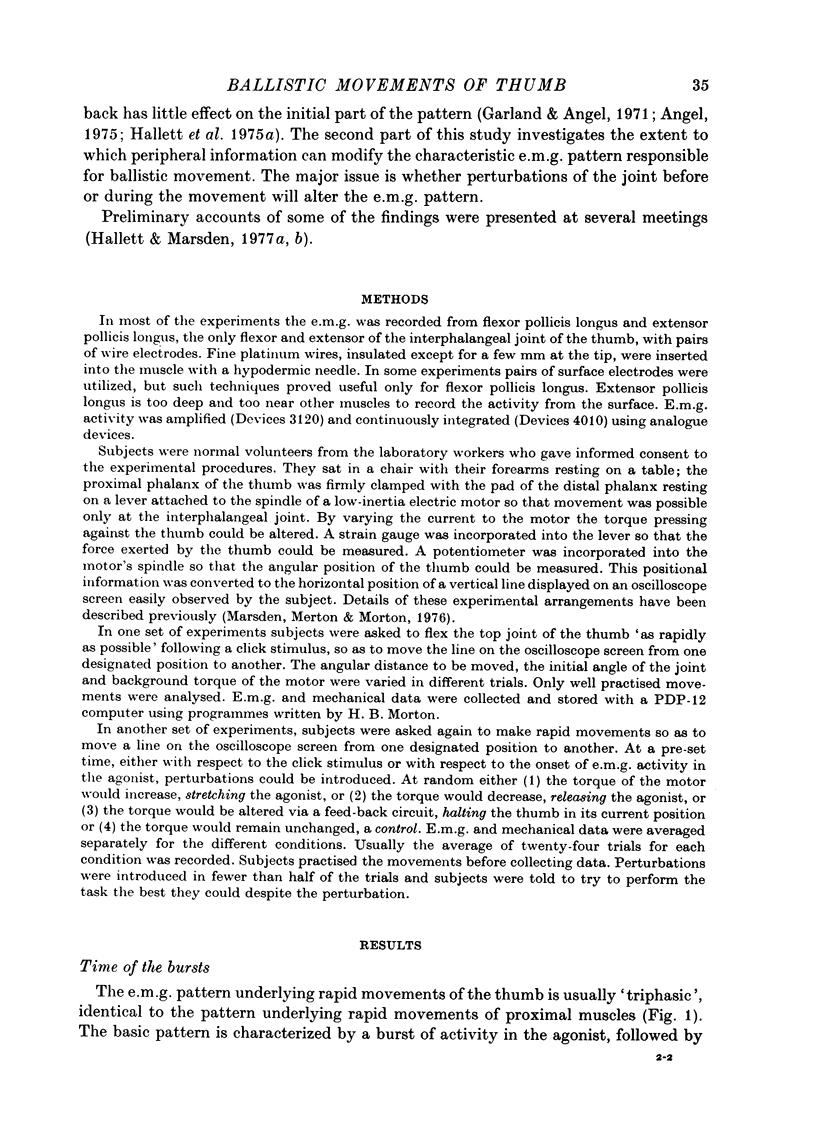
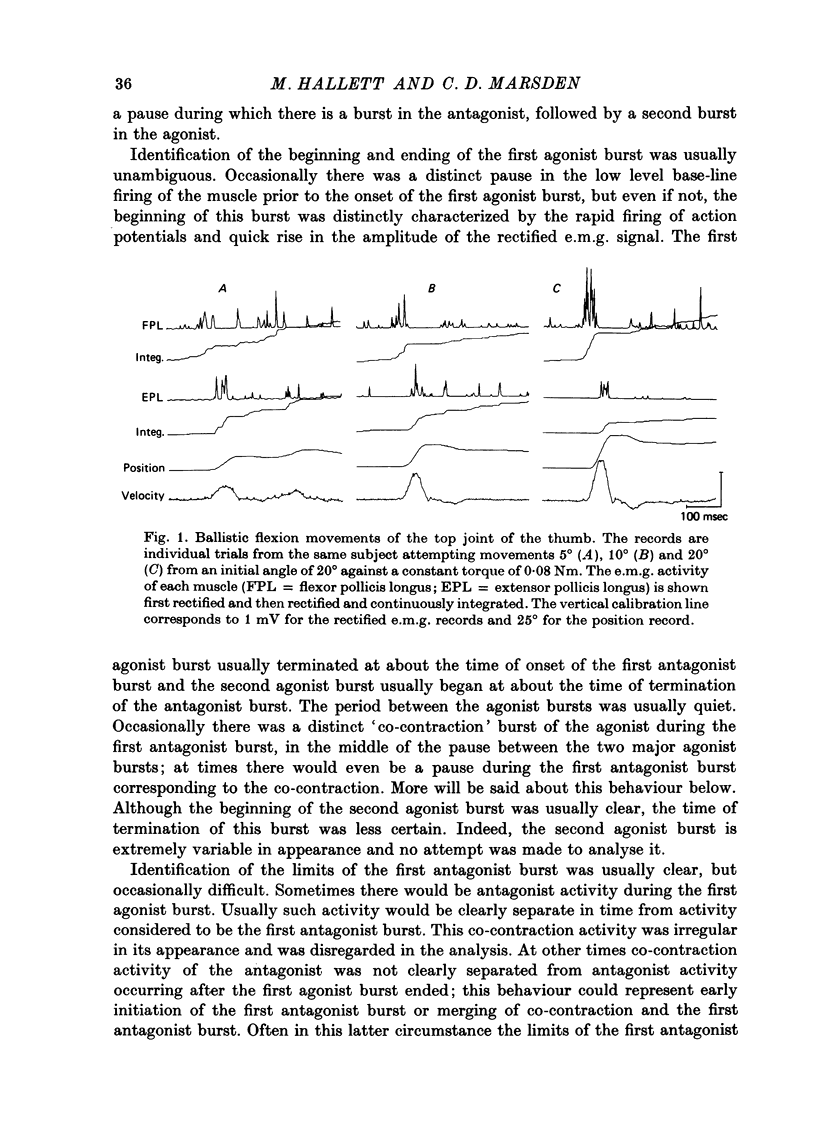
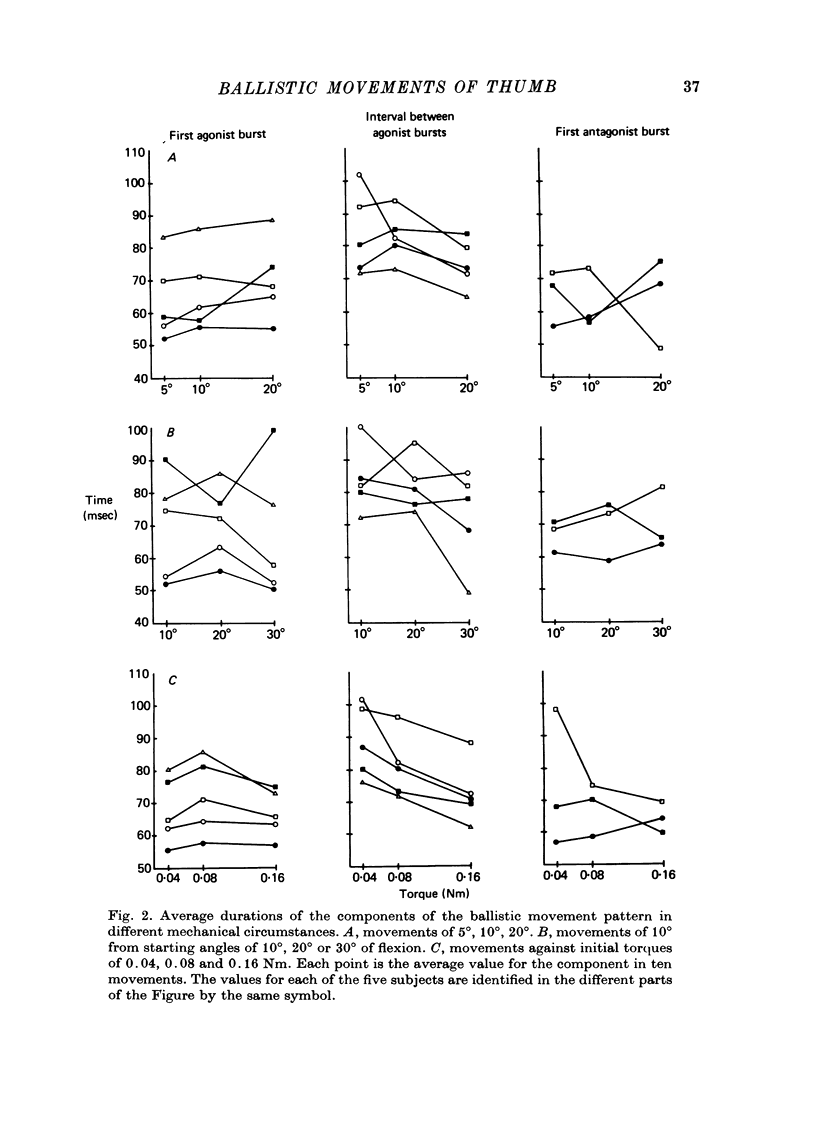
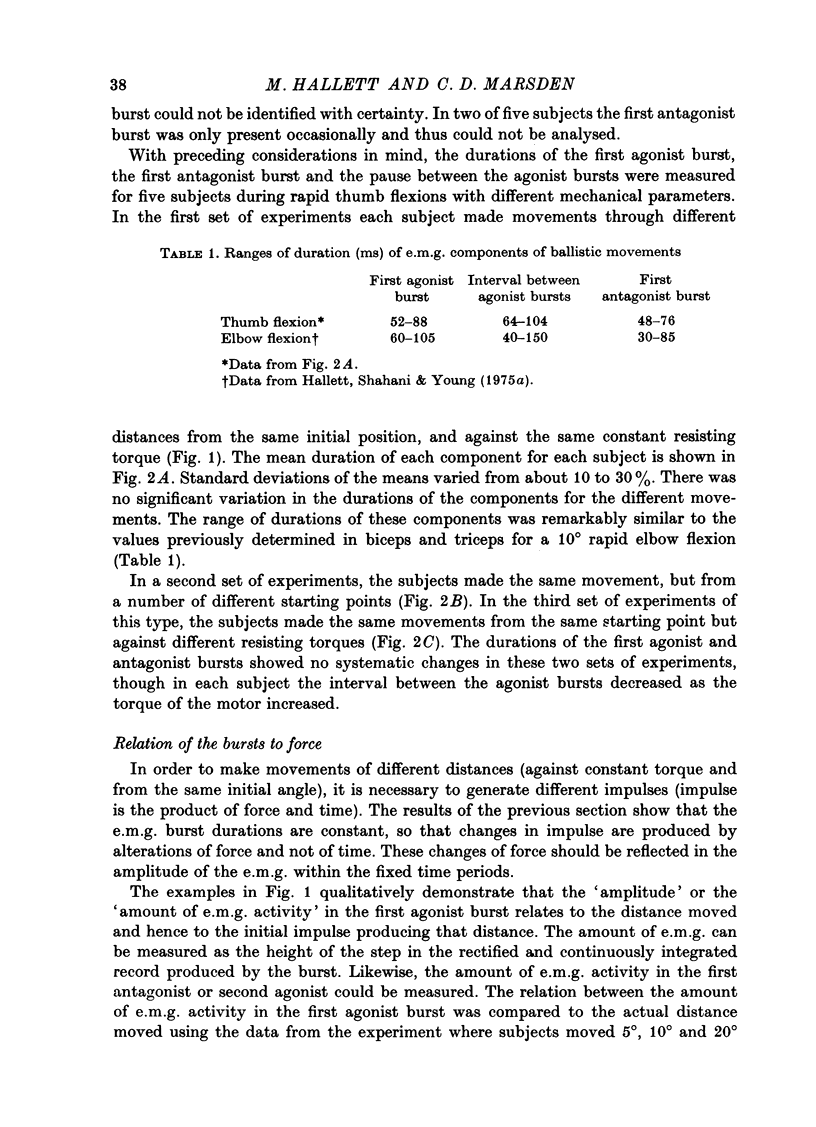
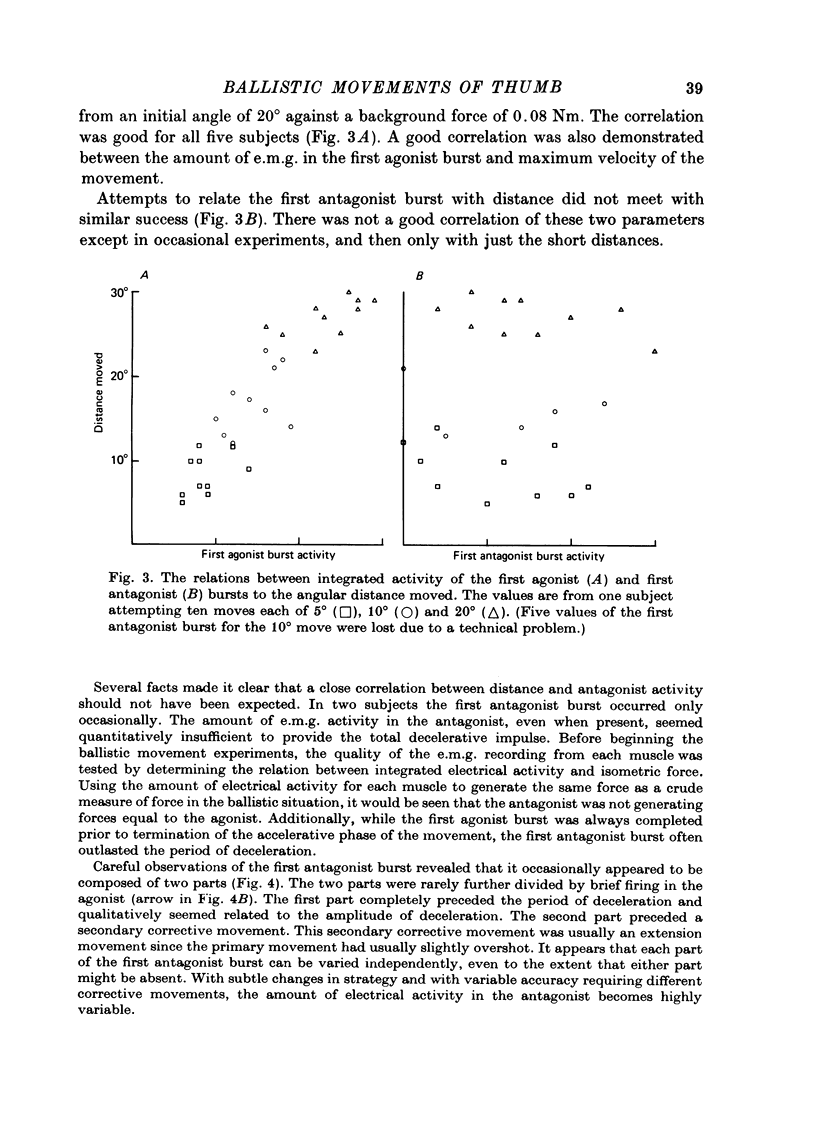
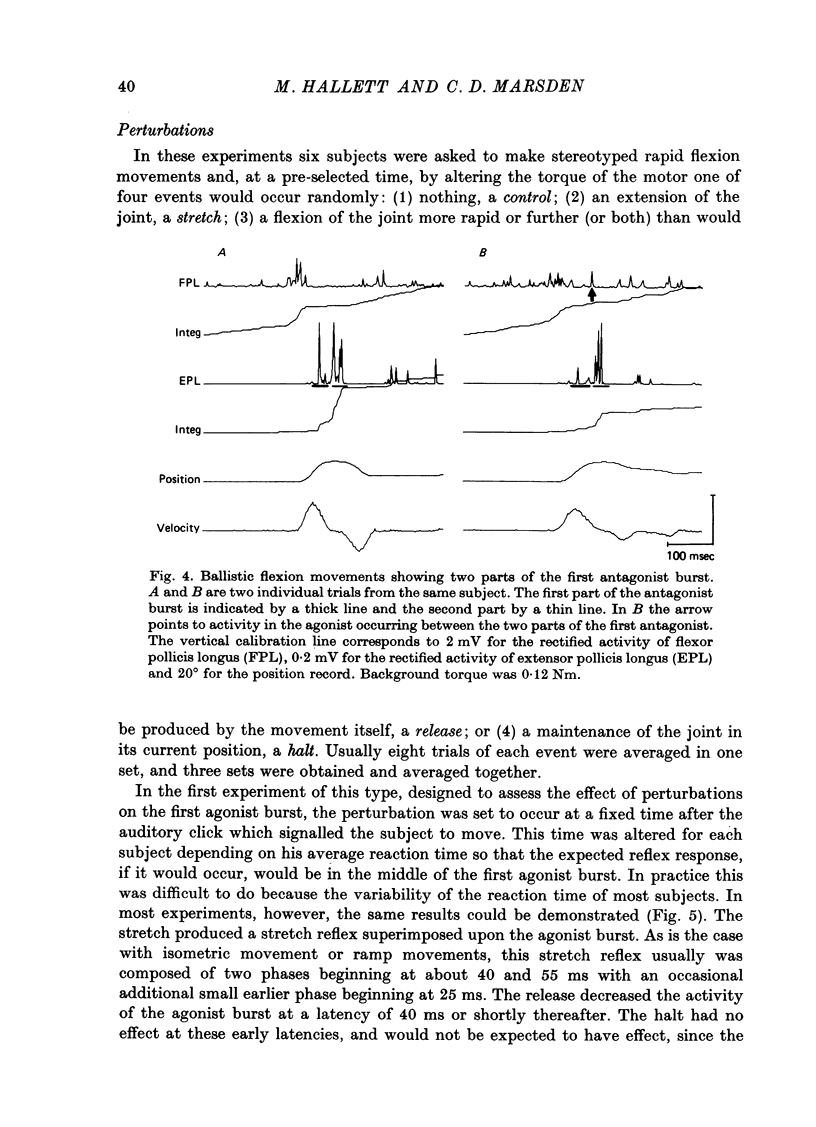
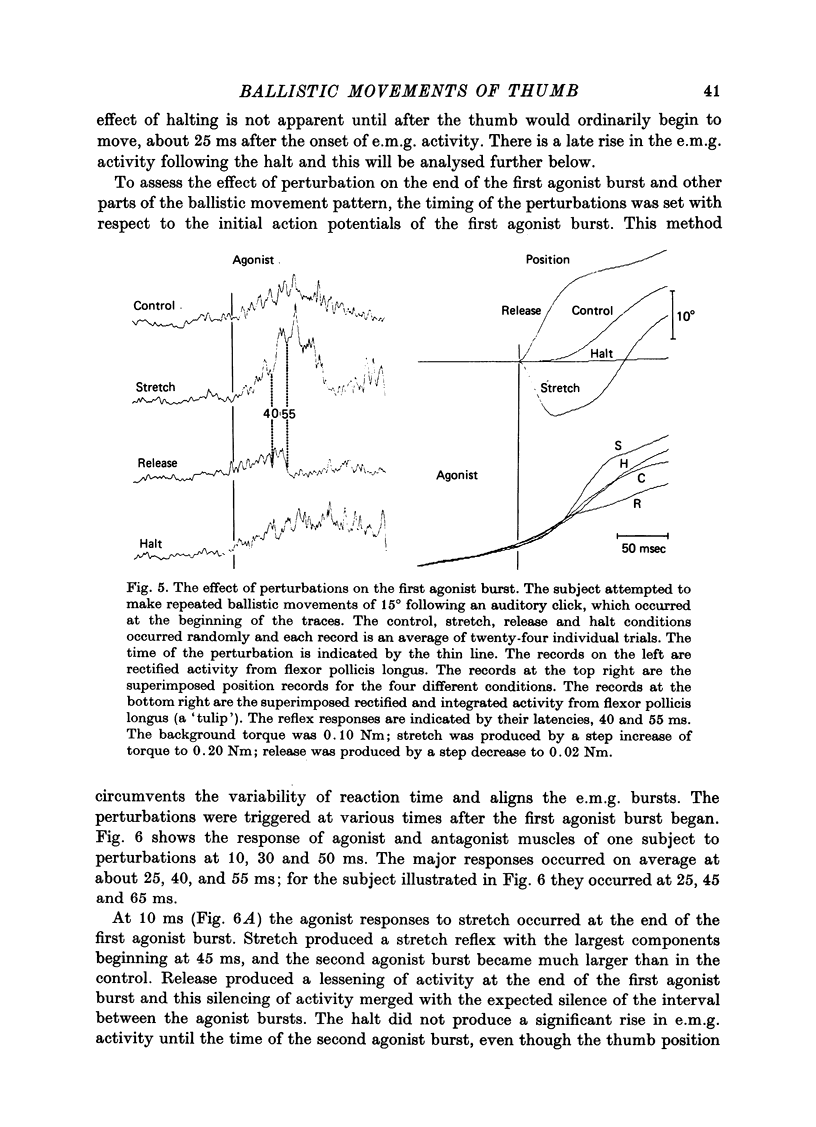
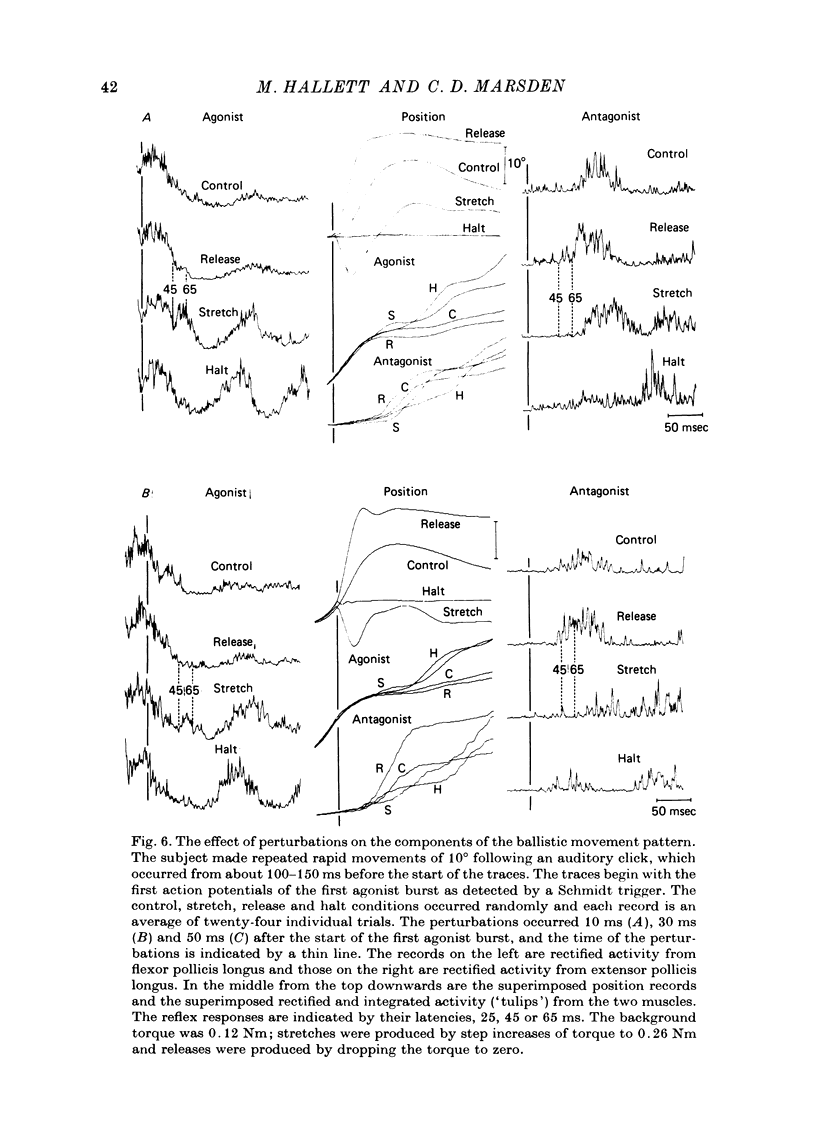
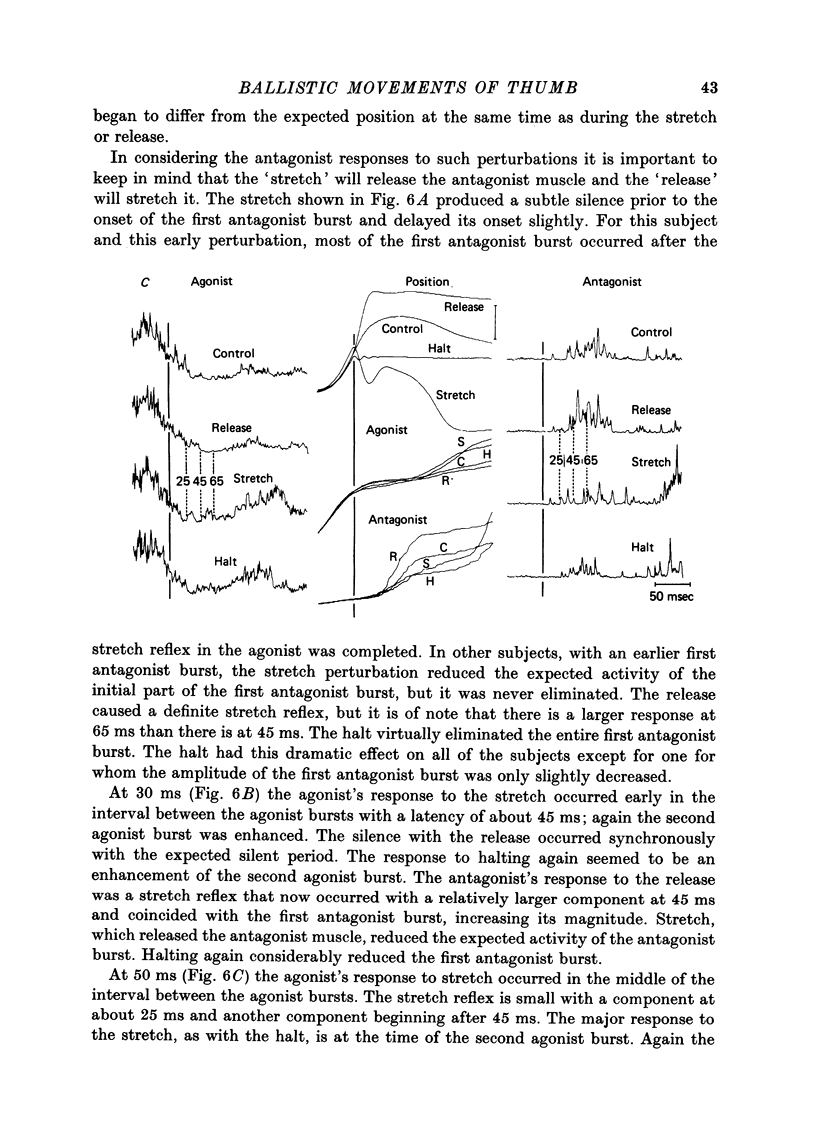
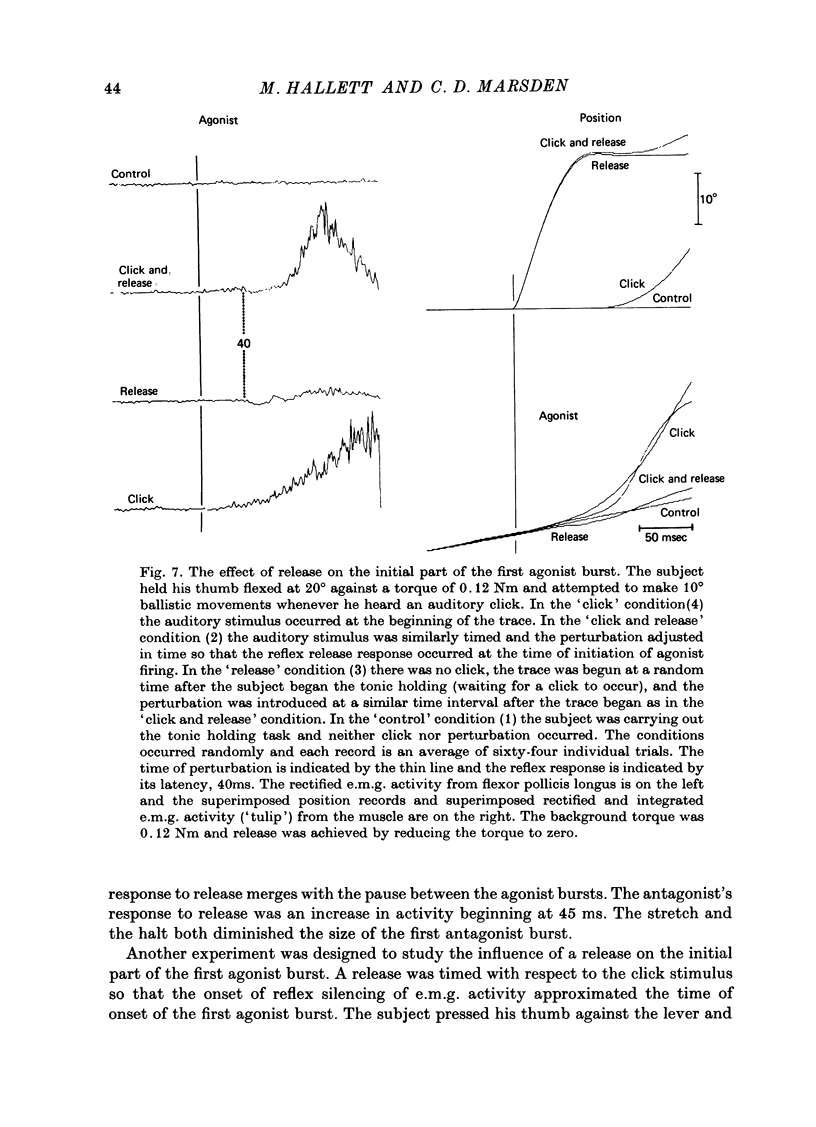
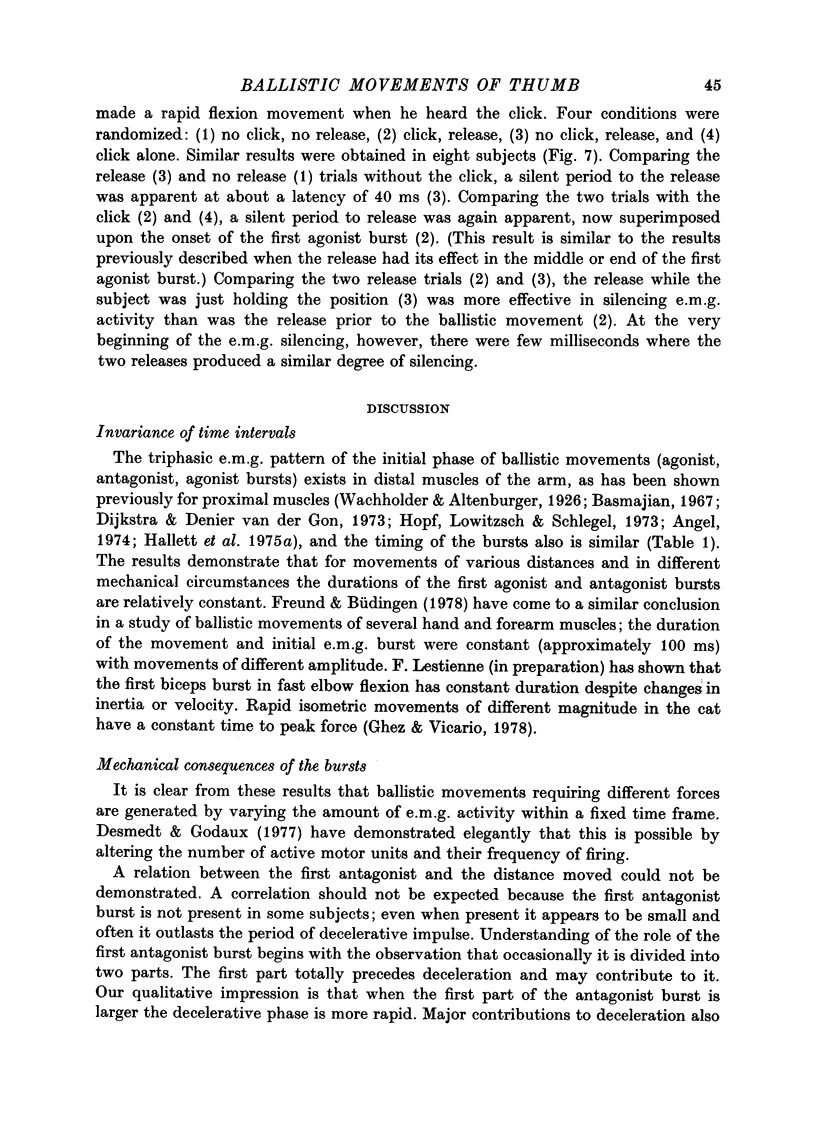
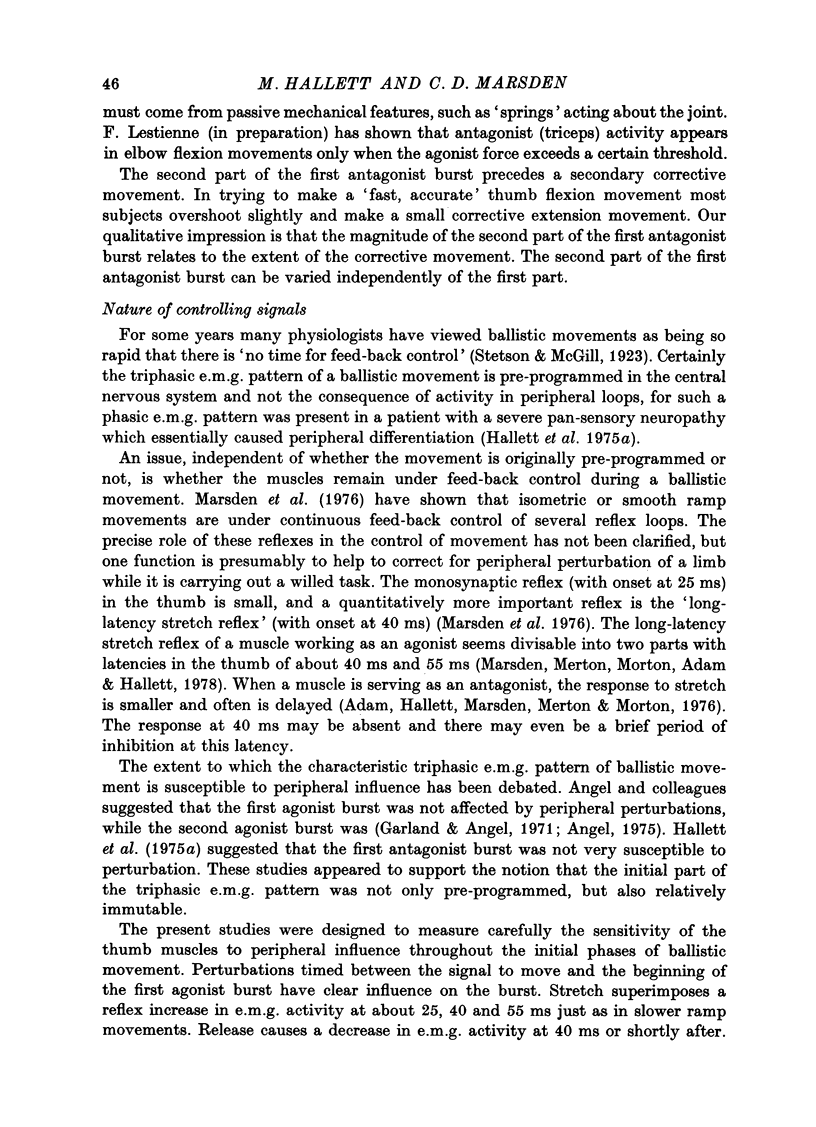
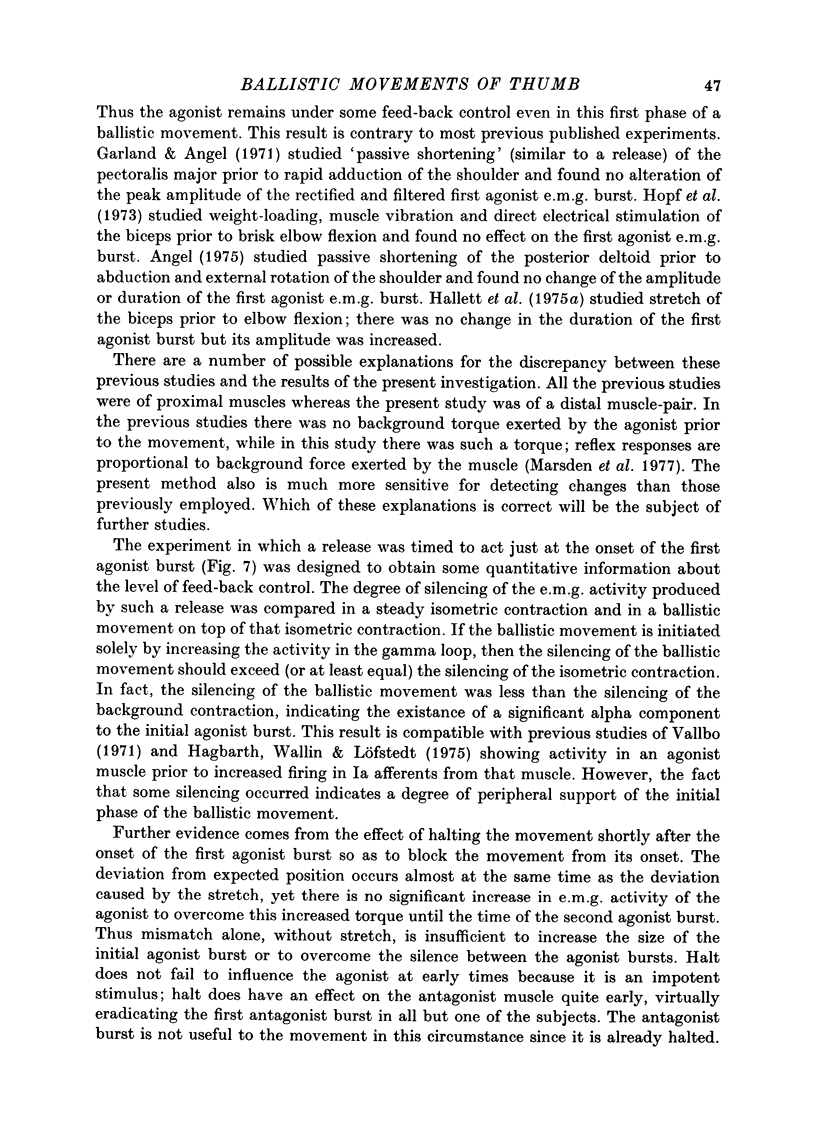
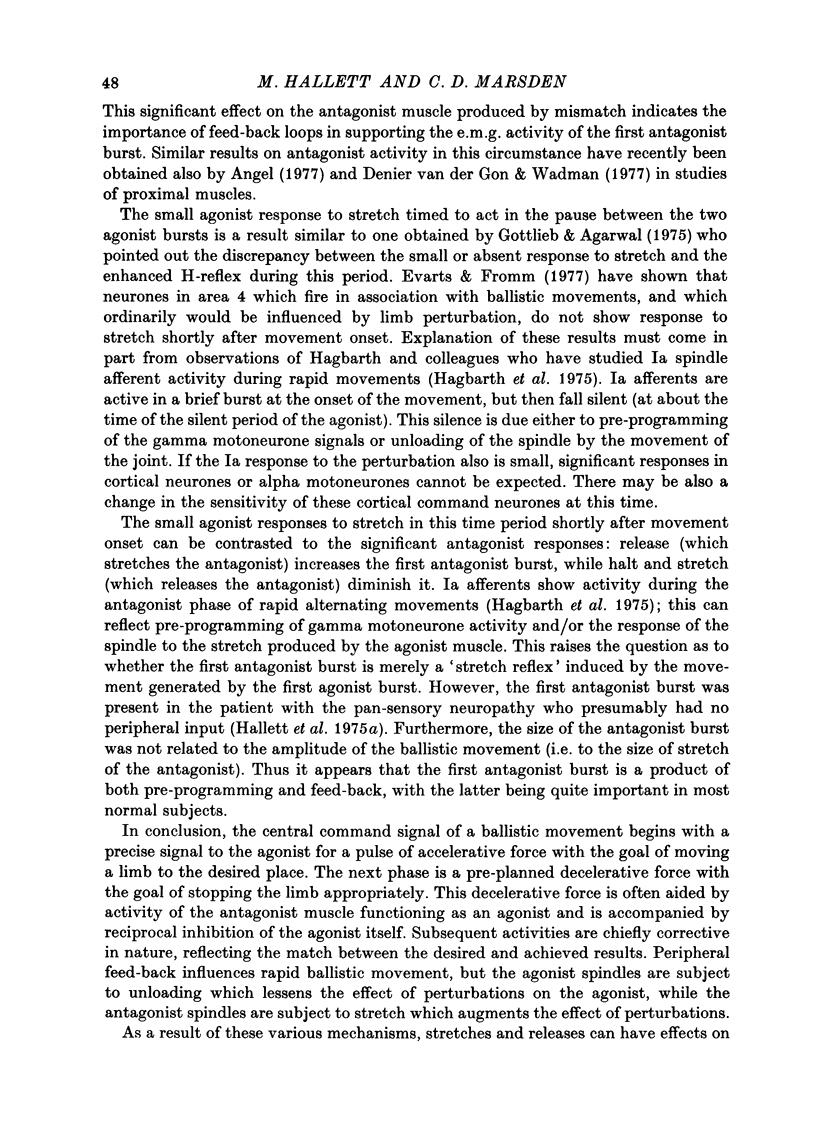
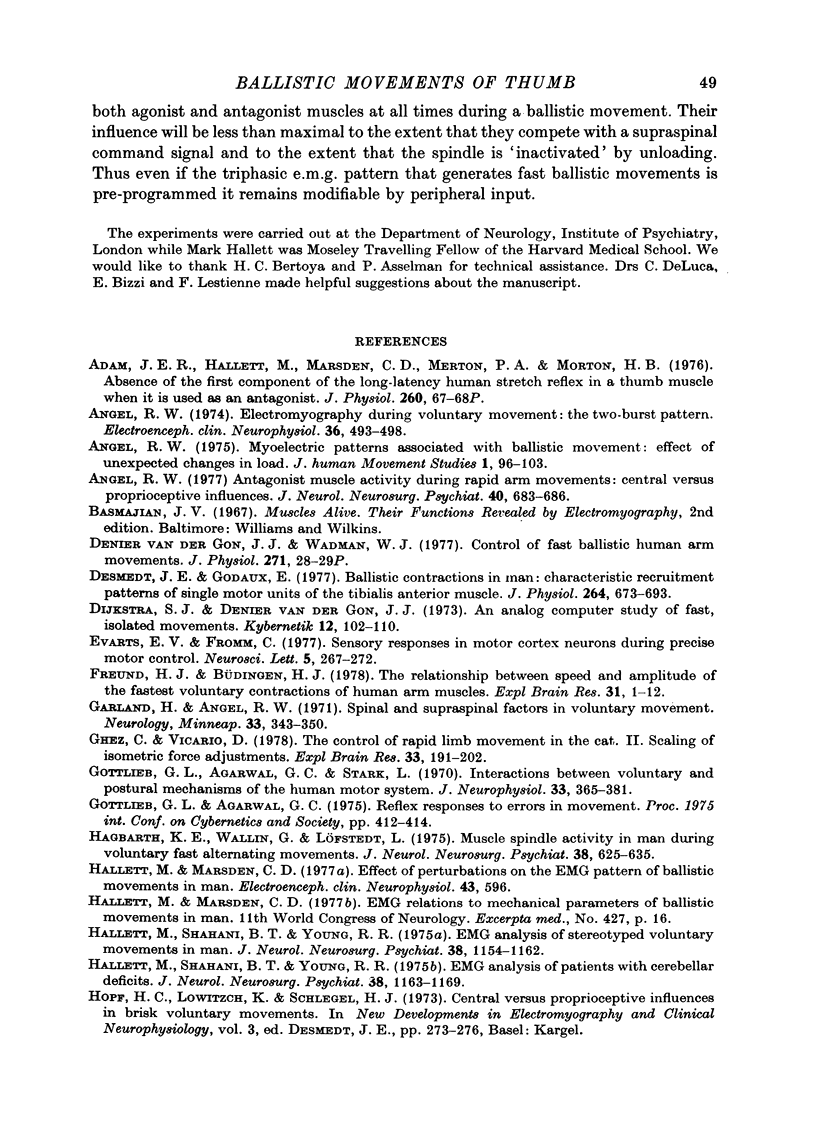
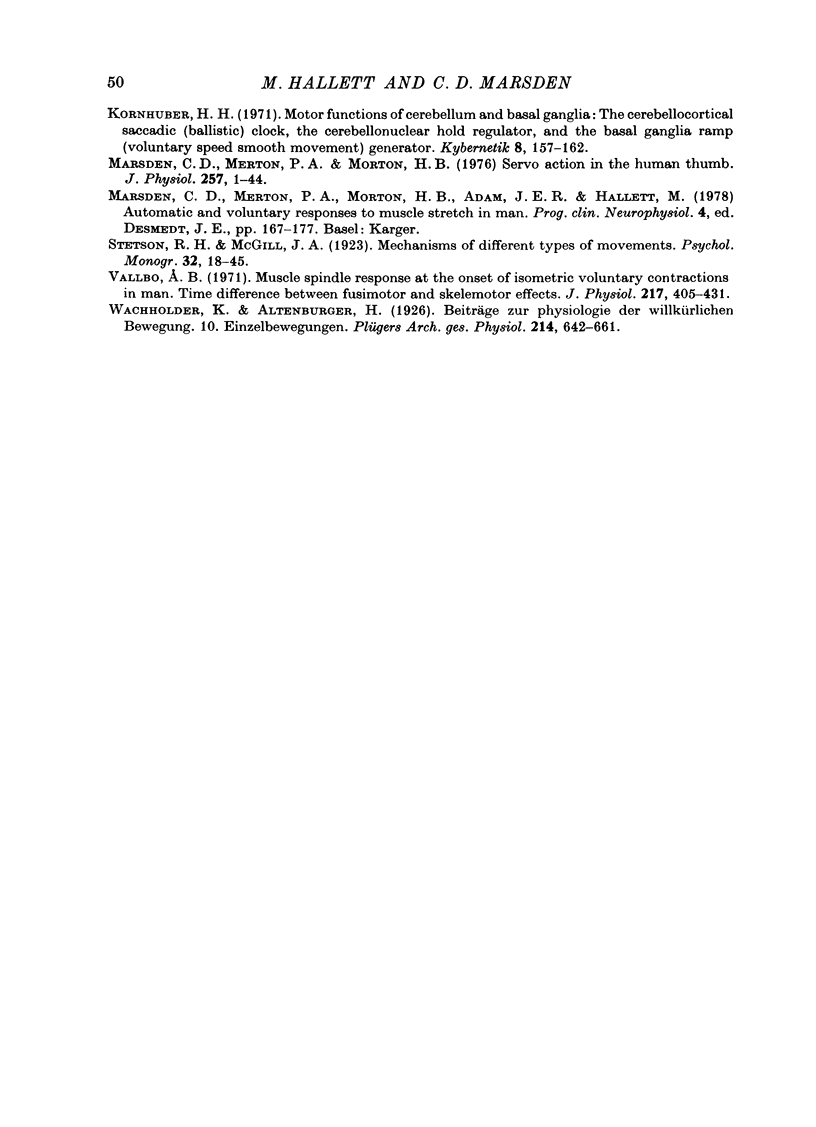
Selected References
These references are in PubMed. This may not be the complete list of references from this article.
- Adam J., Hallett M., Marsden C. D., Merton P. A., Morton H. B. Absence of the first component of the long-latency human stretch reflex in a thumb muscle when it is used as an antagonist [proceedings]. J Physiol. 1976 Sep;260(2):67P–68P. [PubMed] [Google Scholar]
- Angel R. W. Antagonist muscle activity during rapid arm movements: central versus proprioceptive influences. J Neurol Neurosurg Psychiatry. 1977 Jul;40(7):683–686. doi: 10.1136/jnnp.40.7.683. [DOI] [PMC free article] [PubMed] [Google Scholar]
- Angel R. W. Electromyography during voluntary movement: the two-burst pattern. Electroencephalogr Clin Neurophysiol. 1974 May;36(5):493–498. doi: 10.1016/0013-4694(74)90206-5. [DOI] [PubMed] [Google Scholar]
- Desmedt J. E., Godaux E. Ballistic contractions in man: characteristic recruitment pattern of single motor units of the tibialis anterior muscle. J Physiol. 1977 Jan;264(3):673–693. doi: 10.1113/jphysiol.1977.sp011689. [DOI] [PMC free article] [PubMed] [Google Scholar]
- Dijkstra S., van der Gon J. J. An analog computer study of fast, isolated movements. Kybernetik. 1973 Feb;12(2):102–110. doi: 10.1007/BF00272466. [DOI] [PubMed] [Google Scholar]
- Freund H. J., Büdingen H. J. The relationship between speed and amplitude of the fastest voluntary contractions of human arm muscles. Exp Brain Res. 1978 Jan 18;31(1):1–12. doi: 10.1007/BF00235800. [DOI] [PubMed] [Google Scholar]
- Garland H., Angel R. W. Spinal and supraspinal factors in voluntary movement. Exp Neurol. 1971 Nov;33(2):343–350. doi: 10.1016/0014-4886(71)90026-4. [DOI] [PubMed] [Google Scholar]
- Ghez C., Vicario D. The control of rapid limb movement in the cat. II. Scaling of isometric force adjustments. Exp Brain Res. 1978 Oct 13;33(2):191–202. doi: 10.1007/BF00238059. [DOI] [PubMed] [Google Scholar]
- Gottlieb G. L., Agarwal G. C., Stark L. Interactions between voluntary and postural mechanisms of thehuman motor system. J Neurophysiol. 1970 May;33(3):365–381. doi: 10.1152/jn.1970.33.3.365. [DOI] [PubMed] [Google Scholar]
- Hagbarth K. E., Wallen G., Löfstedt L. Muscle spindle activity in man during voluntary fast alternating movements. J Neurol Neurosurg Psychiatry. 1975 Jul;38(7):625–635. doi: 10.1136/jnnp.38.7.625. [DOI] [PMC free article] [PubMed] [Google Scholar]
- Hallett M., Shahani B. T., Young R. R. EMG analysis of patients with cerebellar deficits. J Neurol Neurosurg Psychiatry. 1975 Dec;38(12):1163–1169. doi: 10.1136/jnnp.38.12.1163. [DOI] [PMC free article] [PubMed] [Google Scholar]
- Hallett M., Shahani B. T., Young R. R. EMG analysis of stereotyped voluntary movements in man. J Neurol Neurosurg Psychiatry. 1975 Dec;38(12):1154–1162. doi: 10.1136/jnnp.38.12.1154. [DOI] [PMC free article] [PubMed] [Google Scholar]
- Marsden C. D., Merton P. A., Morton H. B. Servo action in the human thumb. J Physiol. 1976 May;257(1):1–44. doi: 10.1113/jphysiol.1976.sp011354. [DOI] [PMC free article] [PubMed] [Google Scholar]
- Vallbo A. B. Muscle spindle response at the onset of isometric voluntary contractions in man. Time difference between fusimotor and skeletomotor effects. J Physiol. 1971 Oct;218(2):405–431. doi: 10.1113/jphysiol.1971.sp009625. [DOI] [PMC free article] [PubMed] [Google Scholar]


